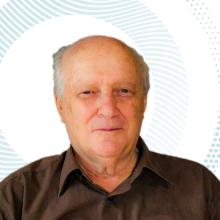
פרופ' משה אבלס
CV
1956-1960 The Hebrew University, Jerusalem M.Sc. Physiology
1960-1966 The Hebrew University, Jerusalem Ph.D. Neurophysiology
1966-1968 Johns-Hopkins Univ., Baltimore Post Doc. Biomedical Engineering
1968 Back prize for 3 papers on excitability of EEG synchronizing and desynchronizing neurons
1971 I.A.P.I. First prize for work on "Computer aided analysis of nerve cell activity"
1980 Dr. Mona and Dr. Ernest Spiegel Chair of Neurophysiology
1980 Visiting professor, Universite de Lausanne
1986 Visiting professor, University of Pennsylvania
1986 Johns Hopkins Society of scholars
1996 Teva founders prize for outstanding work in brain research
1999 Miller visiting professor, UC Berkeley, USA 2004 Emet prize, Israel
2004 - Emet prize, Israel
1997-2000 USA-Israel Binational Science Foundation (with G. L. Gerstein, Philadelphia)
1998-2001 GIF (with A. Aertsen, Freiburg)
2000-2006 Center of Excellence of Israel Science Foundation
(with H. Bergman, H. Sompolinsky, N. Tishby & E. Vaadia, all from Jerusalem).
2002-2005 GIF (with A. Aertsen, Freiburg)
2003-2005 Horowitz fund
2004-2008 DIP (with M. Teicher, T. Flash and T. Geisel, Goetingen)
Research
The way in which perceptions, memories, intentions, etc., are represented in the nervous activity of the brain is not known. The main focus of this field of investigation is to discover these representations and understand the neuronal mechanism which generates them. This is a combined effort including recording the activities of several nerve cells in parallel from appropriate places in the brain of behaving monkeys, devising new mathematical methods for analyzing the data, and verifying the theory by constructing (by way of simulations) neural networks which mimic the postulated brain processes.
So far the results indicate that the prevailing view about coding by enhanced neural activity is only part of the truth. The exact timing of nerve cell activity contains much of the information about what is happening in the brain. This timing can be "read" by neurons due to their sensitivity to synchronized activation. This same property also serves as the basic mechanism by which exact timing is generated. A neural-network known as a synfire chain can both read and generate such well -timed activities. The experimental results support the synfire hypothesis and extend it by suggesting that activity reverberates in such synfire modes. We assume that reverberating synfire chains in different brain locations can resonate with each other, thereby generating a unified "mental" experience.
תאריך עדכון אחרון : 03/06/2025



